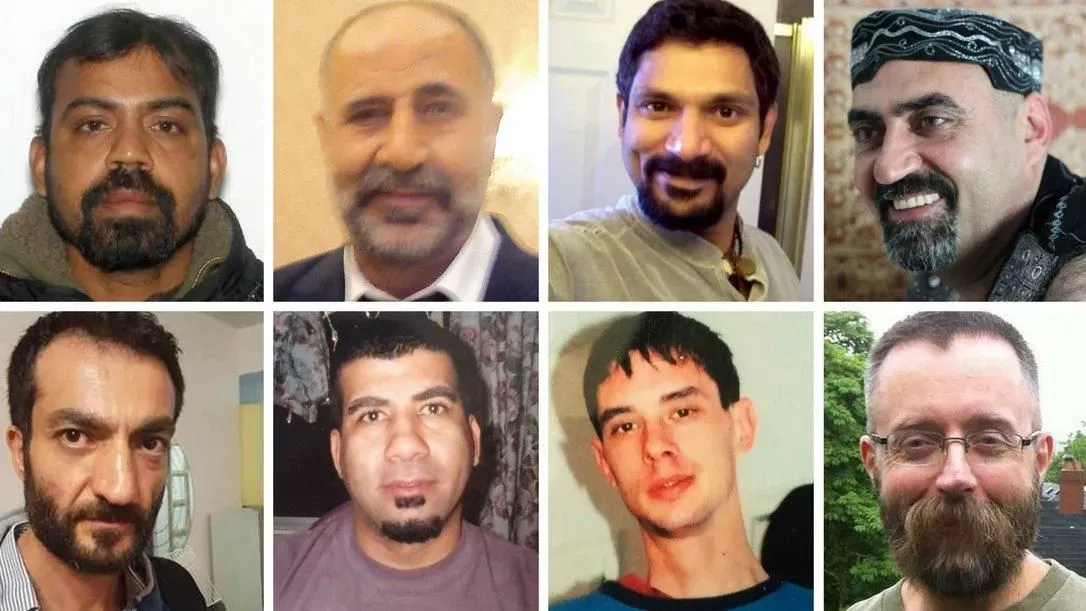Bruce McArthur, the "Landscape Killer"
In 2010, Toronto's Gay Village was plagued by fear as several men, primarily of South Asian and Middle Eastern descent, disappeared without a trace.
The first reported disappearance was that of Skandaraj Navaratnam, a 40-year-old Sri Lankan refugee who worked as a landscaping apprentice, in September 2010. A few months later, in December, Abdulbasir Faizi, 42, vanished and was reported missing by his wife. Despite the discovery of his abandoned vehicle in Toronto, no other clues were found.
In late October 2012, Majeed Kayhan, 58, went missing and the Toronto Police responded by creating Project Houston to investigate the disappearances. Over the next 18 months, they interviewed numerous witnesses, conducted community outreach and searched the internet, but despite their efforts, they were unable to make any significant progress. At one point, they suspected that Navaratnam may have been a victim of Luka Magnotta, but there was no evidence to support this theory. In 2013, Bruce McArthur was questioned regarding his connections to Navaratnam and Kayhan, both of whom had worked for him, but he denied any knowledge of their whereabouts.
Despite the lack of evidence, Project Houston was shut down in April 2014. However, in August 2015, Soroush Mahmudi, 50, was reported missing by his family, becoming another victim of the mysterious disappearances. No additional reports of missing men were made in 2015 or 2016. The pattern continued in 2017, with the disappearance of Selim Esen, 44, in April and Andrew Kinsman, 49, in June. Unlike the previous victims, Kinsman was openly gay and had strong connections to the community, and his disappearance was reported within 72 hours.
The thought of a serial killer among them became increasingly prevalent in the gay community, particularly after they remembered the similar pattern of killings of 14 gay men from 1975-1978, where the murderer was never caught. Despite the police's public denial of the possibility of a serial killer, Sasha Reid, a criminology student, noticed the similarities in the disappearances and brought her findings to the police. This led to public pressure and the formation of a new task force, Project Prism, aimed at finding the missing men.

Police found more evidence linking McArthur to the missing men after searching his apartment, including the DNA of Kinsman and Esen. McArthur was arrested on January 18, 2018, and charged with two counts of first-degree murder. As the investigation continued, more charges were added for the deaths of the other missing men. In January 2019, McArthur pleaded guilty to eight counts of first-degree murder. He was sentenced to life in prison with no chance of parole for 25 years. McArthur's killing spree is considered one of the worst serial killings in Canadian history.
In 2013, a man reported to the police that McArthur attempted to strangle him during a consensual BDSM encounter. Despite this, charges were never pressed, and McArthur's record was later cleared. With insufficient evidence, the police kept McArthur under surveillance, while they collected more information about the burly landscaper, who also moonlighted as a mall Santa.
Despite the lack of prior arrests, McArthur had a dark side that was unknown to those around him. Men who had engaged in consensual BDSM encounters with McArthur came forward to share their stories, revealing that he had disregarded their safe-words and choked or suffocated them until they lost consciousness. This behavior was eerily similar to what was reported to the police in 2013.
Further investigation uncovered McArthur's ties to several missing men, including Navaratnam, Kayhan, and Kinsman. Faizi's car was found near a property where McArthur worked. Kinsman and two other men had connected with McArthur through the BDSM dating app Recon. McArthur had multiple profiles on gay dating apps, where he expressed his preference for submissive men of Middle Eastern or Southeast Asian descent.
As the search for Kinsman progressed, police discovered the word "Bruce" written on Kinsman's calendar for June 26, the last day he was seen. Surveillance footage outside Kinsman's apartment showed a person resembling Kinsman getting into a red 2004 Dodge Caravan. However, with over 6,000 similar vehicles registered in Toronto, the task of identifying the minivan seemed daunting. But after checking the vehicles registered under the name "Bruce", only one was a perfect match to the year, make, and model of the minivan in the footage, and it was registered to Bruce McArthur.
With this evidence, police were finally able to make an arrest. McArthur was charged with Kinsman’s murder, and the investigation continued, leading to the discovery of seven more bodies in large planters at a property where McArthur had worked as a landscaper. All of the victims were men who had disappeared from Toronto’s Gay Village, and they had all been murdered in a similar manner. McArthur later confessed to eight counts of first-degree murder and was sentenced to life in prison with no chance of parole for 25 years.
So they continued to monitor his activities and gather more evidence. They set up a hidden camera outside of McArthur's home and tracked his movements. They also continued to search through his digital records and communicate with people who had interacted with him. All of this helped paint a clearer picture of McArthur's actions and potential involvement in the missing men's cases.
As the investigation continued, more remains were discovered in large planters at a property where McArthur had worked as a landscaper. In total, McArthur was charged with eight counts of first-degree murder in the deaths of Selim Esen, Andrew Kinsman, Majeed Kayhan, Dean Lisowick, Soroush Mahmudi, Skandaraj Navaratnam, Abdulbasir Faizi, and Kirushna Kanagaratnam.
After a long trial, McArthur was found guilty on all counts and was sentenced to life in prison with no chance of parole for 25 years. The case shocked the city of Toronto and brought attention to the ongoing issue of missing and murdered people in the LGBTQ+ community.
The discovery of the files on McArthur's computer was a chilling revelation for police. The folders contained photographs of eight men, all of whom were in bondage gear and posed after their deaths. The folders also contained pictures of the men, who were identified as six of the missing men, including Kinsman. These gruesome discoveries added to the growing evidence of McArthur's guilt in the deaths of several men.
During their search, police found human remains in planters on the property. The remains were later identified as those of seven of the missing men, including Navaratnam, Faizi, Kayhan, Soroush Mahmudi, Skandaraj Navaratnam, Abdulbasir Faizi, and Kirushna Kumar Kanagaratnam. McArthur was later charged with their murders as well.
The trial of Bruce McArthur lasted from January to December 2019, with McArthur eventually being found guilty of eight counts of first-degree murder. He was sentenced to life in prison with no chance of parole for 25 years, which is the longest sentence ever handed down in Canada for multiple murders.
As the search continued, more remains were discovered. Eventually, police were able to identify the remains of eight missing men. The victims, all from the city's LGBTQ community, were Navaratnam, Faizi, Kayhan, Soroush Mahmudi, Dean Lisowick, Selim Esen, Skandaraj Navaratnam, and Andrew Kinsman. McArthur was charged with eight counts of first-degree murder in relation to their deaths.
All eight men were later confirmed to have been murdered by McArthur, who had hidden their remains in the large planters. The discovery of the dismembered bodies sent shockwaves through the Toronto LGBTQ community and sparked widespread outrage. McArthur's heinous crimes marked one of the largest serial killing cases in Canadian history.
McArthur was found guilty on eight counts of first-degree murder and on January 29, 2019, he plead guilty to all the charges. In February of the same year, he was sentenced to life in prison without the possibility of parole for 25 years.
Additionally, many have pointed to the McArthur case as evidence of systemic failures within law enforcement and larger societal attitudes toward marginalized communities. Despite the horrific nature of the crimes and the immense suffering of the victims and their families, the Toronto police were slow to act and to take the concerns of the LGBTQ and Southeast Asian communities seriously. The case has sparked ongoing debates about the ways in which societal biases and prejudices can impact investigations and lead to justice being delayed or denied. The pending external review is an important step in examining these issues and making changes to ensure that this kind of tragedy never happens again.
Yes, there are still many questions and investigations ongoing in this case. The community's criticism of the police handling of the case, and the possibility that McArthur might be linked to other unsolved cases, highlights the importance of being responsive to community concerns and thoroughly investigating all leads and evidence. The re-opening of the cases from the 1970s could help bring answers and closure to families who have been searching for years.


Discussion